
Why AI alone isn’t enough for CX success: Customer experience resolution might be the deal-breaker
Explore why customer experience resolution is critical for brand loyalty. Get insights from our latest research on AI and CX.
Find out where companies are seeing the most value from AI in CX and what this means for your business.
Updated on August 21, 2025
Published on August 21, 2025


As fast as AI in customer experience has exploded on the scene, consumer expectations have amplified, throwing fuel on the fire of urgency for contact centers. The pressure is on for CX leaders to get it right when it comes to AI to not only keep customers satisfied, but keep them loyal for the long term. Too much AI and your customers might crave the human touch, too little and you could face long call queues and burnt-out agents.
So, how are businesses navigating this complex storm? How are they finding the right balance and still generating value from AI in CX? Metrigy’s recent Zoom-commissioned report, The State of AI in Customer Experience 2025, breaks it all down.
The report finds that artificial intelligence in customer service isn’t just promising, it’s performing significantly well. But rather than just implementing AI in a silo, the most successful businesses are finding that the perfect balance of AI and human agents across a unified ecosystem is the key to generating the most value.
In this post, we share seven key stats from Metrigy’s report on companies in the US and UK with 500+ employees that demonstrate where and how AI is moving the needle today and what to look out for in the future.
Find out all the ways AI, human talent, and unified platforms are delivering measurable ROI.
64% say AI benefits already outweigh the spend.
When nearly two-thirds of companies say AI is paying off, it’s a clear sign that it’s a strategic advantage. AI in customer experience is no longer an experiment; it’s producing real business benefits. This is backed by 73% of companies that say AI is bringing real value to their organization.
CX leaders who act now can get ahead of the learning curve. That doesn’t mean just throwing AI into the mix to see what sticks. Bringing together a team of people to provide expertise, best practices, training, and guidance for AI decisions in the form of an AI Center of Excellence (AI CoE) is a proven way to ensure business gains from AI across the company. The report found that 40% of companies already have an AI CoE in place, and 53% of companies are planning for one.
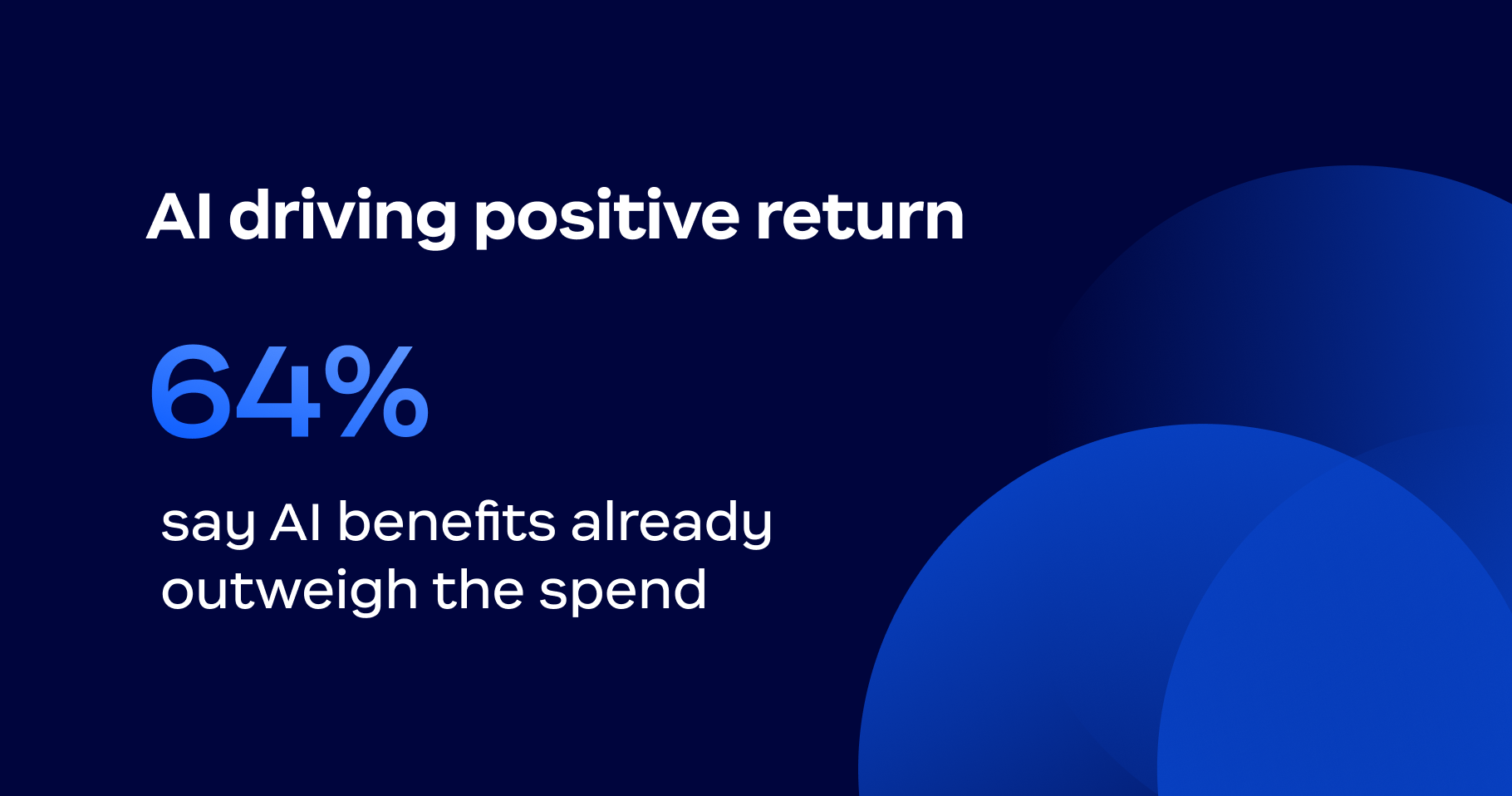
76% report improved customer satisfaction of 31% on average, and 63% report a 30% average increase in employee efficiency from AI use.
When we think of AI in call centers or contact centers, it’s often about how it will improve the customer experience. These results show that both customers and employees see positive impacts from AI. When agents feel empowered and are given the tools to do their jobs better, customers are more likely to be happy with their customer service interactions.
Thanks to AI features, Zoom customer Cricut has improved first-contact resolution, addressing complex issues in one interaction. Customers are happy because they’ve cut wait times by nearly 90% and their agents are feeling great about the change, too.
With auto-generated tickets and summaries, agents spend more time assisting customers and less on manual documentation. Productivity has skyrocketed!
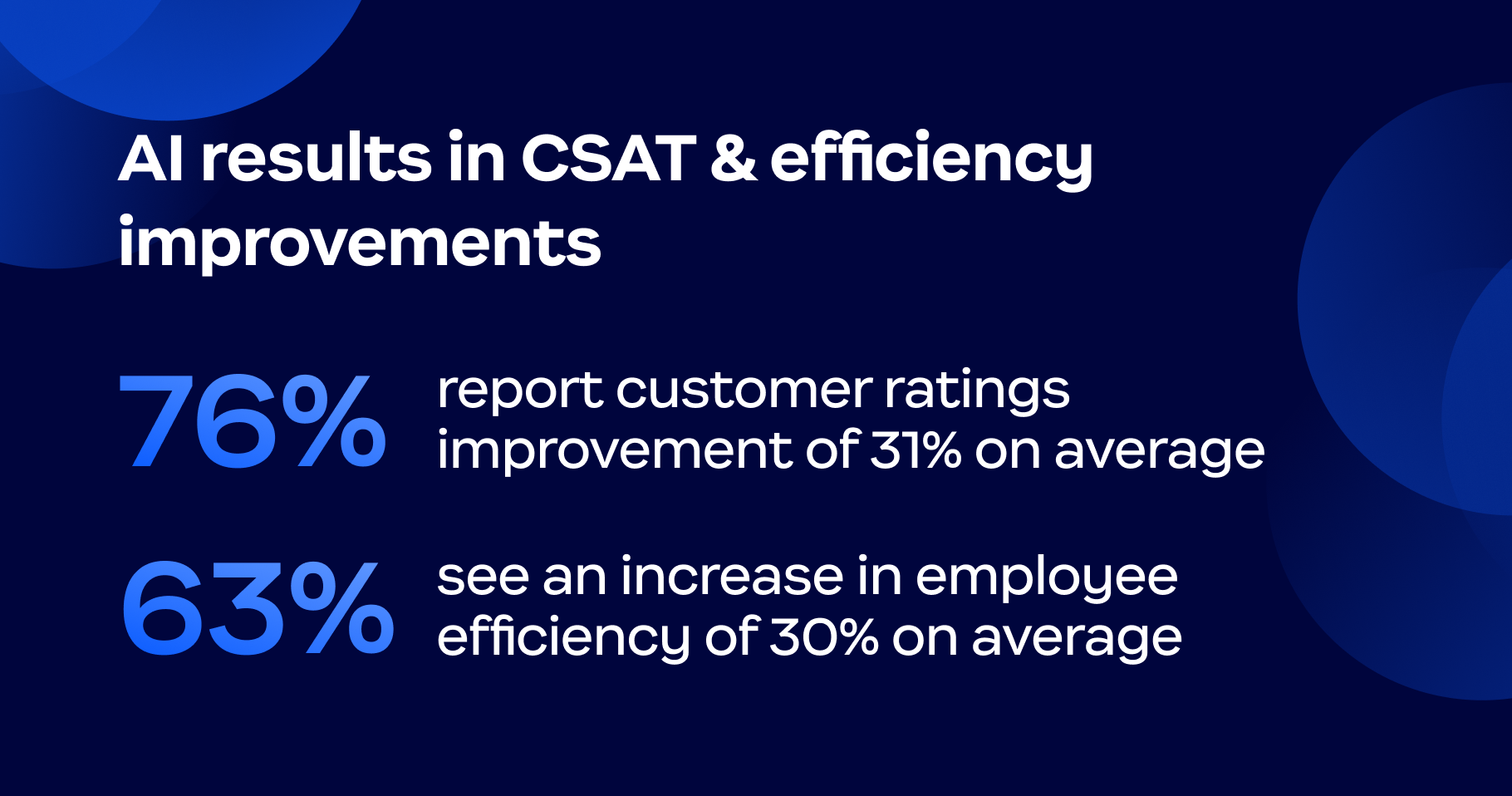
64% of companies using agent assist saw a 28% reduction in average handle time and 42% saw a 29% drop in agent attrition.
It makes sense that agent assist tools, which are designed to autonomously find and surface the right information at the right time for agents, can cut handle time. What’s interesting is by how much — and how these tools can significantly reduce agent turnover.
According to a 2018 report by McKinsey & Company, agent attrition can cost a company $10,000 to $20,000 per agent, making a considerable dent in operating costs each time an employee leaves. This signals that investing some of your AI funds in agent assist tools could prevent substantial expenses down the road.
Among companies using and measuring agentic AI’s impact, 64% report greater employee efficiency and 49% report revenue growth.
Agentic AI hasn’t been on the scene long, but it’s already making its mark. Early adopters are reaping the benefits; 60% say agentic AI has reduced costs, and 39% are seeing improved customer satisfaction scores (CSAT).
Agentic AI is different because it works independently to proactively understand inquiries, take action, and complete even complex queries on your behalf. It can dramatically reduce customer and agent effort, and the results from Metrigy’s research reflect how it can positively impact contact center performance and your business as a whole.
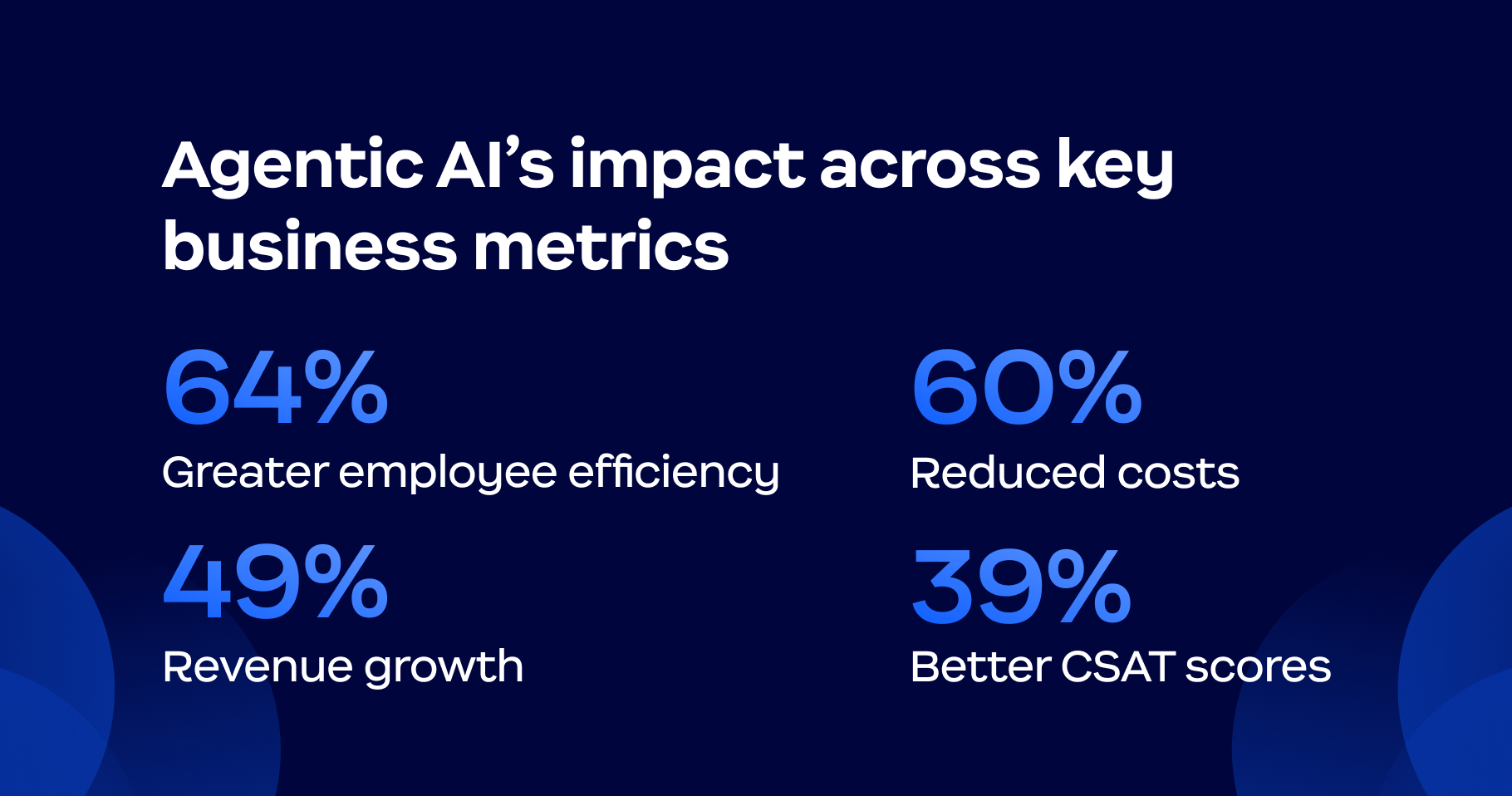
64% of companies are either already using or planning to add AI agents to their contact centers in 2025.
Given the success of agentic AI, it’s not surprising that the latest AI virtual agents are quickly becoming a strong component of the modern contact center. The virtual agent is a prime use case for agentic AI because it can reduce customer effort by resolving even complex issues autonomously.
We’re seeing what Zoom Virtual Agent is capable of in our own contact center, where 97% of queries are solved through self-service and we’ve experienced a 28% increase in CSAT scores.
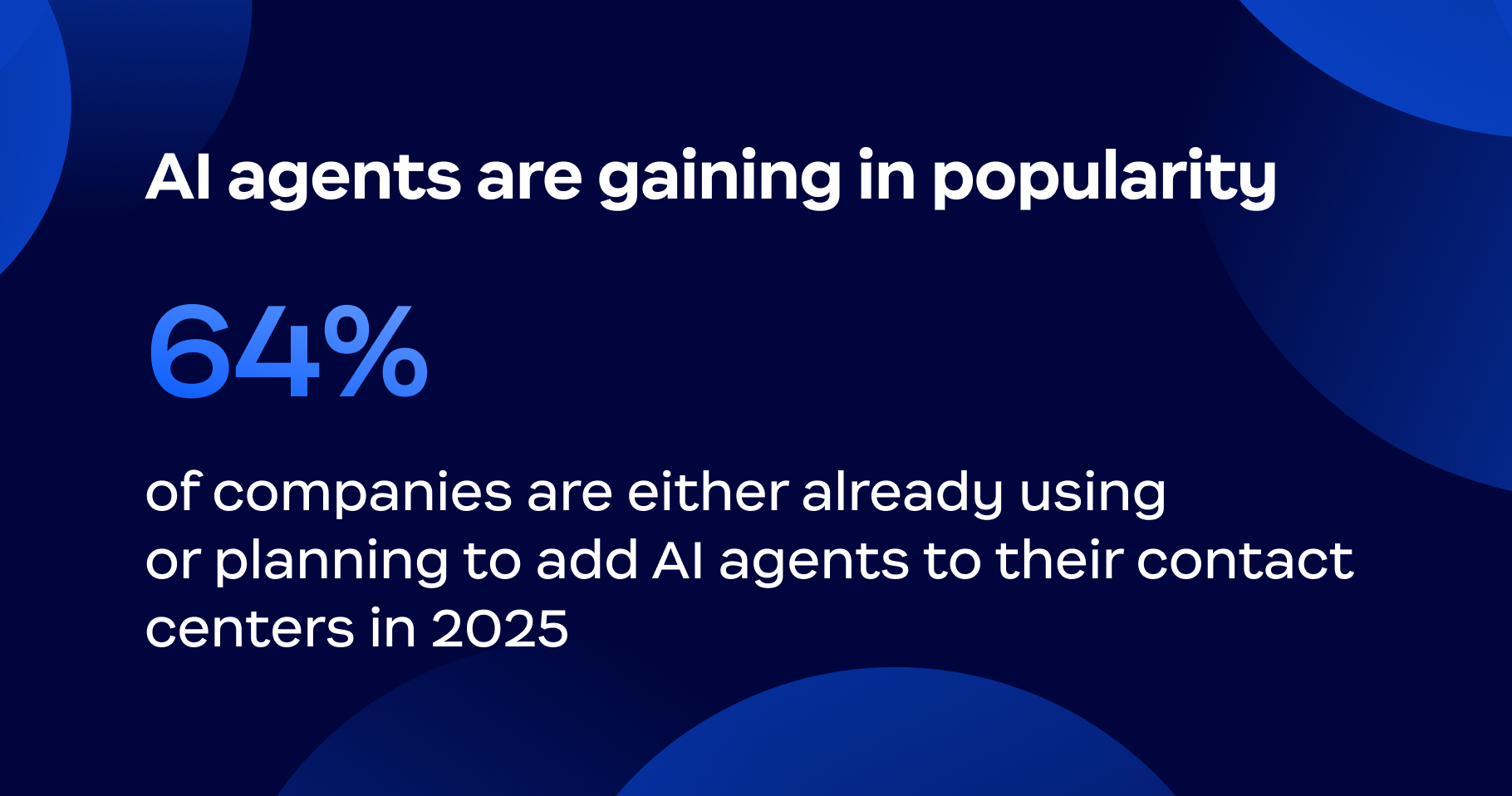
87% of companies say AI is already helping generate enough sales to cover the costs of the contact center.
Companies are using contact center AI in novel ways, namely to increase sales. By using agent assist tools to help guide employees through sales conversations, many businesses are opening up new sales channels and giving agents the chance to broaden their skills. This illustrates that AI isn’t just a cost reducer; it has the potential to make the contact center a revenue engine in its own right.
33% of companies have already integrated their CCaaS and UCaaS platforms, and another 41% plan to do so by 2025.
AI isn’t the only shift Metrigy’s report identifies. More and more companies are moving to combine their CCaaS and UCaaS platforms, along with their CRM. When combined with AI, the benefits of a unified ecosystem are significant:
With these benefits and the 63% cost savings Metrigy’s research identifies, it’s no wonder that more companies are moving to integrate their contact centers, business communications, and CRM into a single platform.
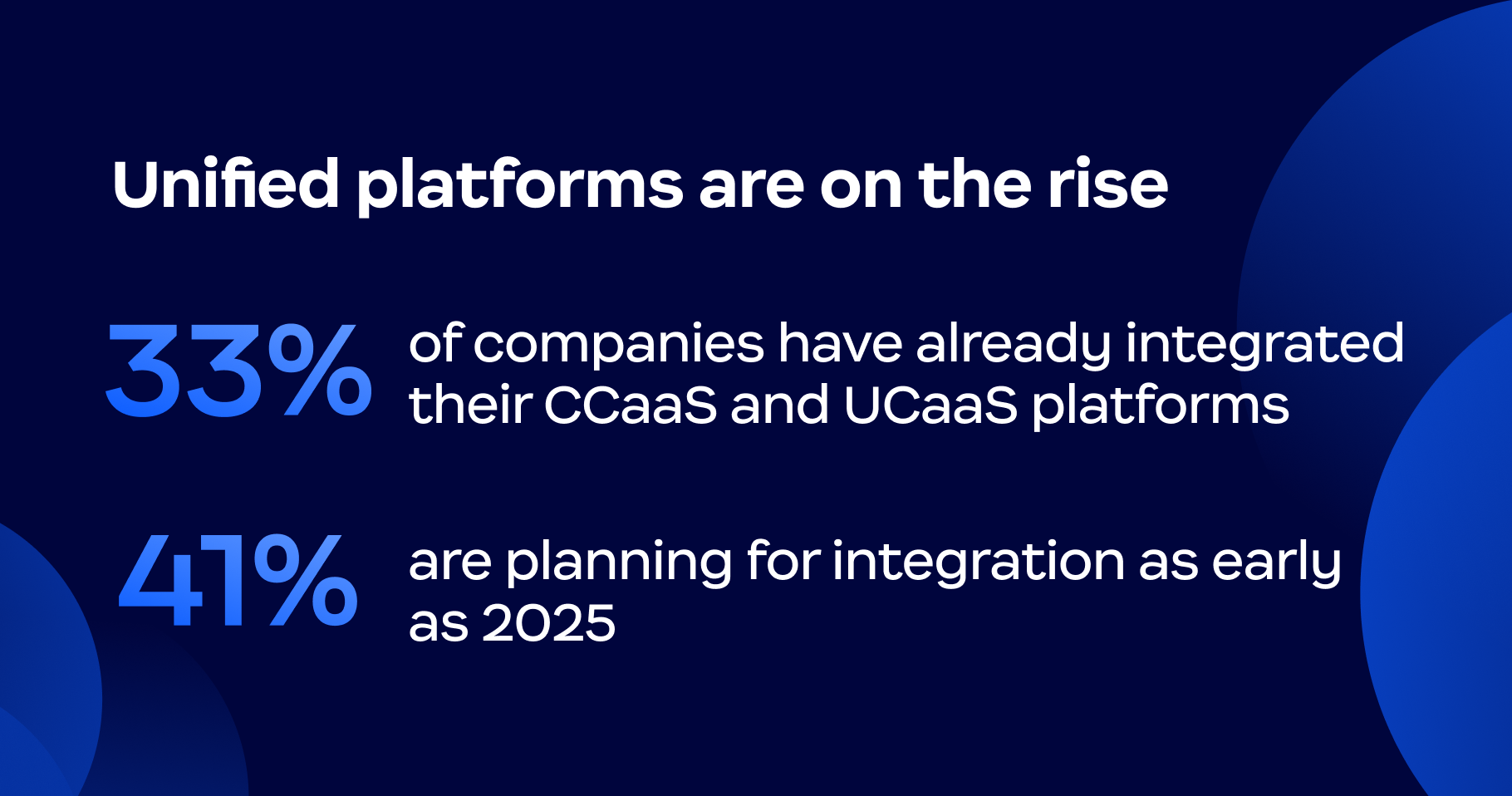
There’s no doubt about it: AI is transforming how service teams work and perform. Metrigy’s research demonstrates how AI can not only make things more efficient, but also has the power to please customers, keep and empower your employees, and even open up new revenue channels. It’s also clear that AI doesn’t work without a well-thought-out strategy, and its benefits are amplified even further when part of a unified platform.
Download the full report, The State of AI in Customer Experience 2025, for these findings and more insights and recommendations to help you prioritize, plan, and invest wisely.
Reach out to us today, we’d love to chat with you about how our Zoom CX solution can help set your business up for AI success.